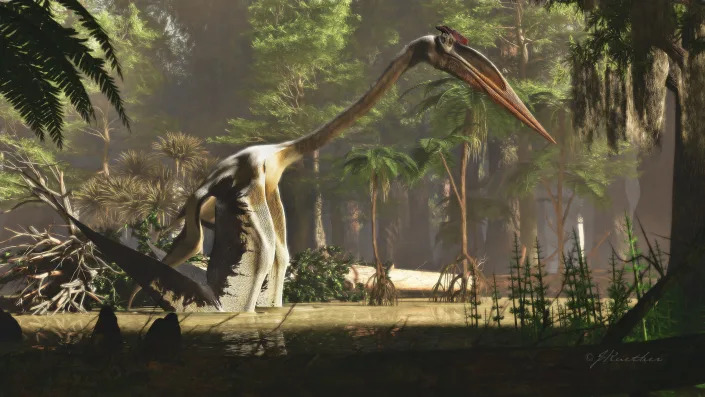Chris Varcoe, Calgary Herald

A sign near the 2021 World Petroleum Congress boldly declares: “Welcome to Houston — Energy Transition Capital of the World.”
The Texas city is hosting the international gathering this week, bringing together more than 5,000 government leaders, CEOs and industry observers to talk about the future as the energy world tilts on its axis.
Earlier this year, the Greater Houston Partnership released a report that says if the region takes decisive action to lead the low-carbon transition, the region could gain up to 560,000 jobs. If it doesn’t, Houston could lose up to 370,000 positions by 2050.
“We see this an opportunity and an obligation,” said Bob Harvey, president of the Houston business organization.
“The energy industry model that has served Houston’s economy — and that of other energy-focused regions — so well over the last few decades must adapt and change.”
This all sounds familiar for Calgary, another oil and gas city that will be home to the World Petroleum Congress in 2023.
Consider what’s at stake in this transformation for Alberta: $61 billion.
A new study released Tuesday by the economic development organizations for Calgary and Edmonton estimates the global energy transition could create an additional 170,000 jobs in cleantech and contribute more than $60 billion to the province’s economy by 2050.
However, sticking to a business-as-usual approach only generates 20,000 new jobs and $4 billion in economic activity.
“A low-carbon transformation of Alberta’s industries and economy will not be without its challenges,” the report states.
“However, Alberta stands to gain a strong market advantage by developing key clean transition technologies at home. Alberta has considerable technology strengths, energy infrastructure and assets to capitalize on, which also gives the province a unique position in the race to net-zero.”
A race to net-zero.
Those are important words to consider because this is a contest to adopt technology, build new infrastructure, attract investment and create jobs.
If the province isn’t ready for such reinvention, it’s going to be left behind.
Alberta will need to attract more than $2 billion annually in new investments by the end of this decade, topping $5.5 billion by 2040, to capitalize on the opportunities ahead, the study says.
That’s up considerably from less than $1 billion in spending that’s now taking place.
The report identifies six sectors with the greatest potential to pull in foreign investment and create employment: electrification, energy efficiency, agriculture technology, hydrogen, digitization, and carbon capture, utilization and storage (CCUS).
The province has a solid foundation to build upon.
Alberta is home to more than 900 cleantech firms, 462 companies based in Calgary and 429 in the Edmonton region. Together, they directly employ almost 15,000 people, while 137,000 people work (directly and indirectly) in the broader cleantech realm, according to the report.
Aside from being home to the oilsands, the province has large natural gas supplies, extensive energy infrastructure and a skilled workforce, with the most engineers per capita in Canada.
Calgary, like Houston, sees risks facing the conventional oil and gas business as the global drive to low-carbon energy gains momentum, ESG considerations move to the fore and divestment pressures mount.
“We recognize the world is looking for lower-emitting sources of energy and we want to be well-positioned — we are well-positioned — for that,” said Energy Minister Sonya Savage, who is in Houston to speak at the gathering.
“But there continues to be a demand-pull for oil and gas.”

Alberta has to move on both tracks.
Six of the province’s largest oilsands producers are already working together to attain net-zero emissions by 2050
TC Energy and Pembina Pipeline are developing plans for a world-scale carbon transportation and sequestration system. Dow Inc. is looking to build the world’s first net-zero carbon emissions ethylene cracker and derivatives complex at its petrochemical operations at Fort Saskatchewan.
Just last week, pipeline giant Enbridge agreed to collaborate with Capital Power on a proposed CCUS development near the Genesee Generating Station west of Edmonton. The project is expected to capture up to three million tonnes of CO2 emissions each year.
The carbon capture development “will be one of the biggest projects in the world” of its kind, Enbridge CEO Al Monaco said Tuesday.
“To hit any of the targets out there, CCUS is going to be a necessity. So I think we’re going to see a very steep ramp-up — an exponential ramp-up — in CCUS investment,” he said at the company’s annual investor day event.
“I would put the United States maybe slightly ahead, just given where they are with their incentive package … and that will likely rise. Canada, though, I would say is close behind.”
Policy certainty will be critical as Canada jockeys with countries such as Norway, the United States or Saudi Arabia to attract investment in the energy transition space.
Calgary Economic Development interim president Brad Parry said access to data and the decision-makers in the Canadian oil and gas sector can help the city become the “epicentre” of the energy transition.
New projects are already lifting off.
Enbridge said Tuesday it will spend $200 million on six new solar self-powering facilities across its North American pipeline network.
The Calgary-based company also earmarked another $100 million for a floating offshore wind project, situated off France’s southern coast.
“What is really important strategically is getting the pace of transition right,” Monaco added. “That means you’ve got to be aligned with policy and economic signals — not too far ahead, but you can’t be behind.”
There will be plenty of places in the running to become the Energy Transition Capital of the World.
In this race, Calgary, Edmonton — and all of Alberta — have to be ready to compete.
Chris Varcoe is a Calgary Herald columnist.
cvarcoe@postmedia.com
















